It could be that you’ve already made up your mind about Ducati’s Streetfighter V4S. It is polarizing — it’s exotic, fast, and was forged in the windowless rooms of one of the most famous factories in Europe.
It’s brash and boastful, covered in bulges, angles, and even wings. Considering the reputation that Ducati holds in the motorcycling world for making purposeful sport bikes, it’s hard to blame anyone for assuming that this new Streetfighter would be hard-edged and uncompromising. So many of the blurs of red that have emanated from Bologna have been just that. Not least of which was the previous, 1098 Streetfighter, which was arguably the most visceral way to enjoy the ungodly torque of Ducati’s final generation of long-stroke V-twin superbike engines.
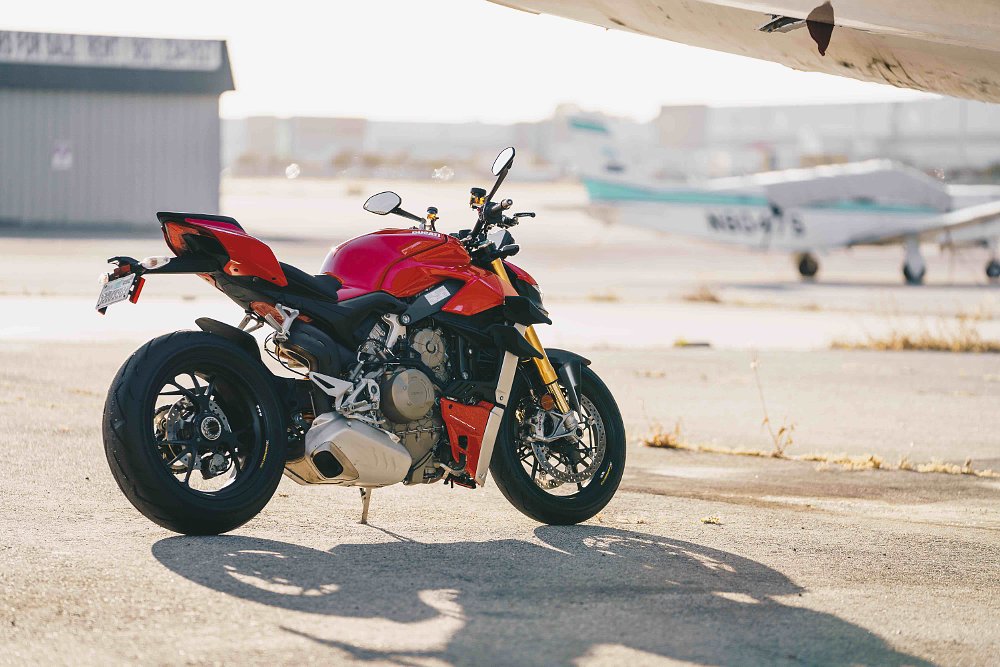
That bike was also very raw, maybe even too raw. The handlebar had a strange bend that was torture for my wrists, made worse by the seat that pitched forward so much I had to hold my delicate bits away from the back of the tank. Unless I was mid power wheelie, of course, and then my attention was probably on my feet slipping off the smooth, cast footpegs. Add to that a spartan dash, minimal adjustability, and track-tuned suspension. It was a hot and spicy handful of motorcycle.
An everyday Panigale
The new Streetfighter V4 is based off the Panigale V4 platform, as you probably know or learned from Ari’s virtual-launch article. It uses the same mini-spar frame to connect the fork to the front of the engine, while the swingarm hangs on to the back. It also borrows the 5.5-inch TFT dash, carries the same 4.2 gallons of fuel, and mimics the superbike’s wasp-like stinger of a tail section. Where the new Streetfighter departs from the Panigale platform is ergonomics. The obvious flat handlebar goes along with a thicker seat and footpegs that are lower by 20 mm to make a much more relaxed riding position. Sporty, without being uncomfortable.
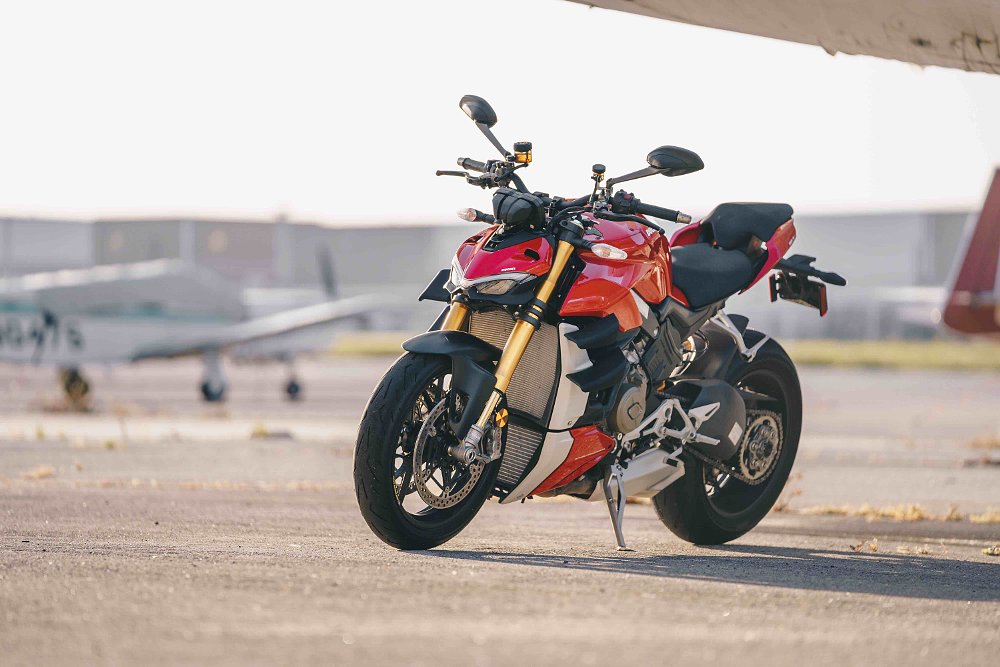
The reason everyone is going to shell out their hard-earned lira, though, is the engine. The Panigale’s 1,103 cc V-four, with an oddball firing order and a backward-rotating crankshaft, a la MotoGP. Claimed output is 208 horsepower at 12,750 rpm and 90.4 foot-pounds of torque at 11,500 rpm, making the Streetfighter the clear new king of spec-sheet power shootouts. But, my favorite part of the engine isn’t the huge numbers, it’s the sound. The funky firing order was designed to make the character of the V-four feel more like a V-twin, and the sound is absolutely in line with that. It sounds lumpy in just the right way at idle, almost unassuming considering the 14,500 rpm rev ceiling.
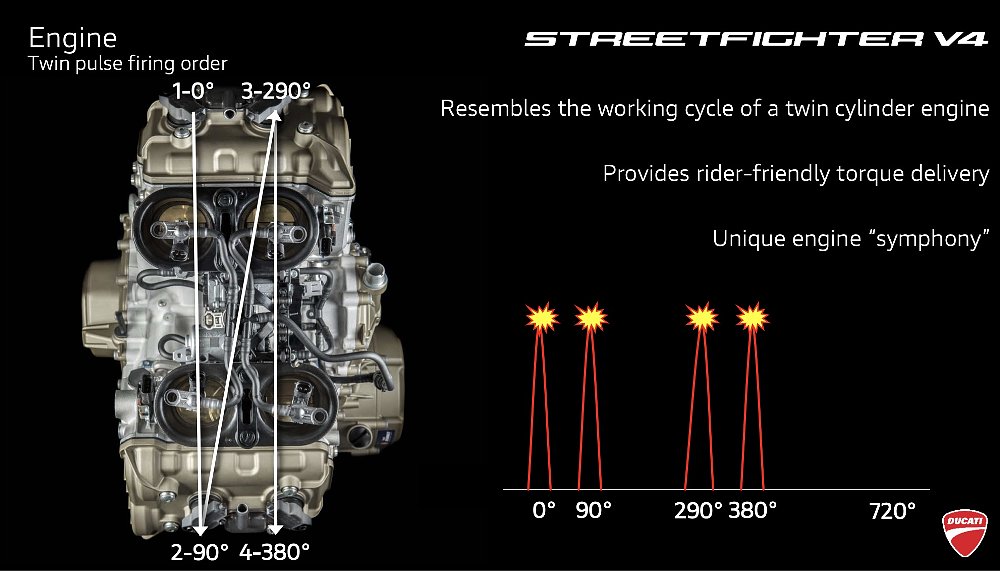
Options and settings on this S-model I tested are vast. The menu system, controlled by the two rocker switches just inboard of the left grip, allow the rider to switch between the three ride modes (Street, Sport, and Race), and offers adjustability and access to everything from calibration of the ABS after new tires are put on to deciding what color the backlight is on the dash. The S model employs semi-active Ohlins suspension, meaning it makes damping adjustments as you ride — damping is also electronically adjustable, which makes the menus extra deep. It can be intimidating.
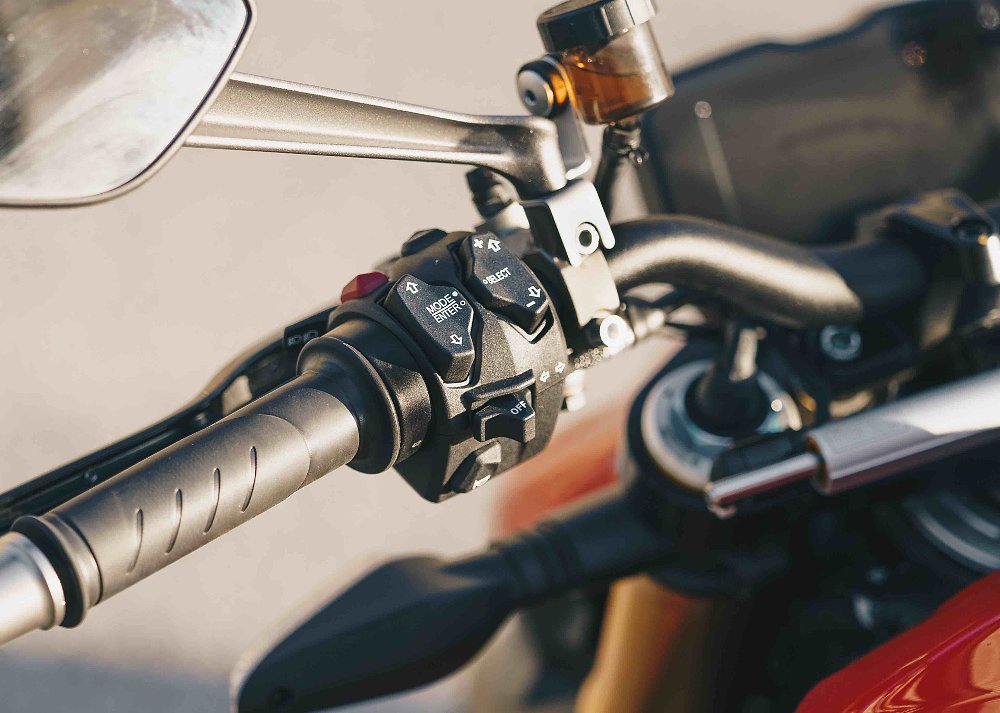
To make the whole idea of suspension adjustment easier to tackle, Ducati decided to design the adjustability around parameters of riding. So, in addition to the ability to adjust fixed suspension settings, the rider can change how much “brake support” is offered by the suspension, for example, choosing between “performance” and “comfort.” The same goes for the ABS, which offers different levels, lower being “performance” and higher being “safety.” Weathered riders still thirsty for the uncompromising trial-and-error of yesteryear will grimace at the thought of a bike holding your hand through suspension setup. I may be one of those riders, but even so I can’t deny that this system makes sense of a complicated subject and is easy to use.
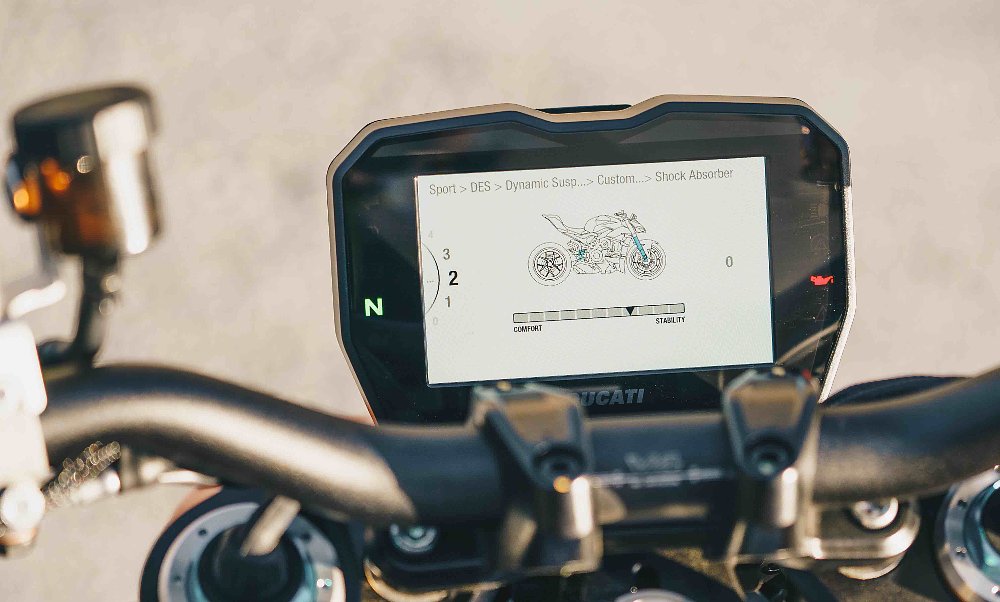
I could go on and on with descriptions of the menus, but you’re probably cursing me already: “Just tell me what it’s like to ride, you hack!” Alright, geez, no need for insults.
A jump to hyperspace
Every company that takes a superbike and turns it into a super-naked-bike always makes similar claims about how comfortable it has become, how fast it still is, and what a reasonable machine it will prove to be overall. As I said, historically Ducati didn’t always hit that nail on the head. But the first few miles on board the Streetfighter V4 proved that the folks in Bologna have made big strides. The seat is wide and soft, with all of the controls falling exactly where you’d expect. And if they don’t, basically every pedal and lever is adjustable — one of the perks of a high-end machine.
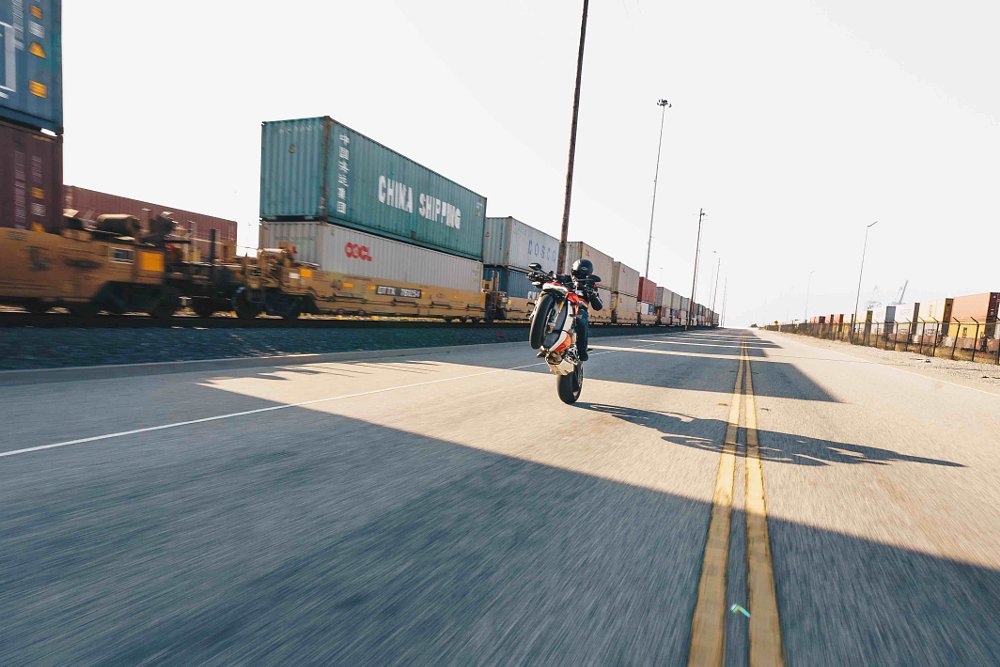
Ari noted in his first look that Ducati test rider Alex Valia said a lot of time was taken to make sure the throttle response was smooth, and I’m delighted to report that his work paid off. The Streetfighter is surprisingly pleasant at low speed, with good clutch feel and very linear throttle pickup despite the clatter of 200 ponies waiting to be released. The engine pops and gurgles and burps at low rpm but it’s only auditory. Aside from a little less steering lock than I wanted, it’s easy enough to ride slow and doesn’t surprise you with any weird stutters or quirks.
On the open road it’s more of the same. Whether you’re blasting down the highway or running between stop lights on city streets, it’s as willing a partner as you’ll find. Wind protection is somewhere between minimal and non-existent, as you’d expect. Then again, the forward cant of the riding position leaned my torso into the wind just about right for American speed limits. The bright colors of the dash sit just out of view, arguably appropriate for a super naked, as far as I’m concerned, and the mirrors are amazingly smooth, even if they’re not quite wide enough. The only ergonomic miss in my view is the shortened final-drive gearing, which puts the engine at about 6,000 rpm at 75 mph. Considering how much smoother the engine is at 5,000 rpm, a smaller rear sprocket would be on my list.
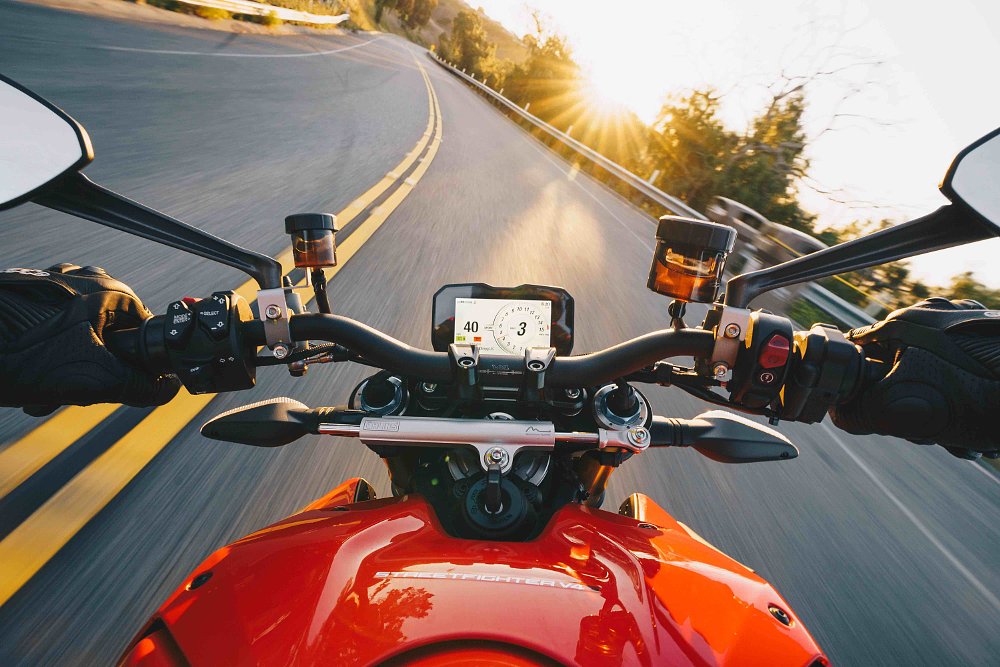
Up to this point, the Streetfighter V4 had over delivered on the promise of being a usable superbike, with good slow-speed manners and a friendly cruising demeanor. Not to the point of being worried that it would handle a twisty road, though. That’s not something Ducati is likely to screw up. When the going got curvy, this Streetfighter proved to be an admirable sport bike. The front end is planted and communicative, like Ducatis often are, and it flicks from side to side easily. Plus, the brakes are superbike sharp, the up/down quickshifter is sweet to use, and the previously mentioned fueling makes doling out power as easy as you please. It feels very sporty in that it benefits from a little body language to get it to turn — I had to move a cheek off the seat and lean in to get the most balanced handling.
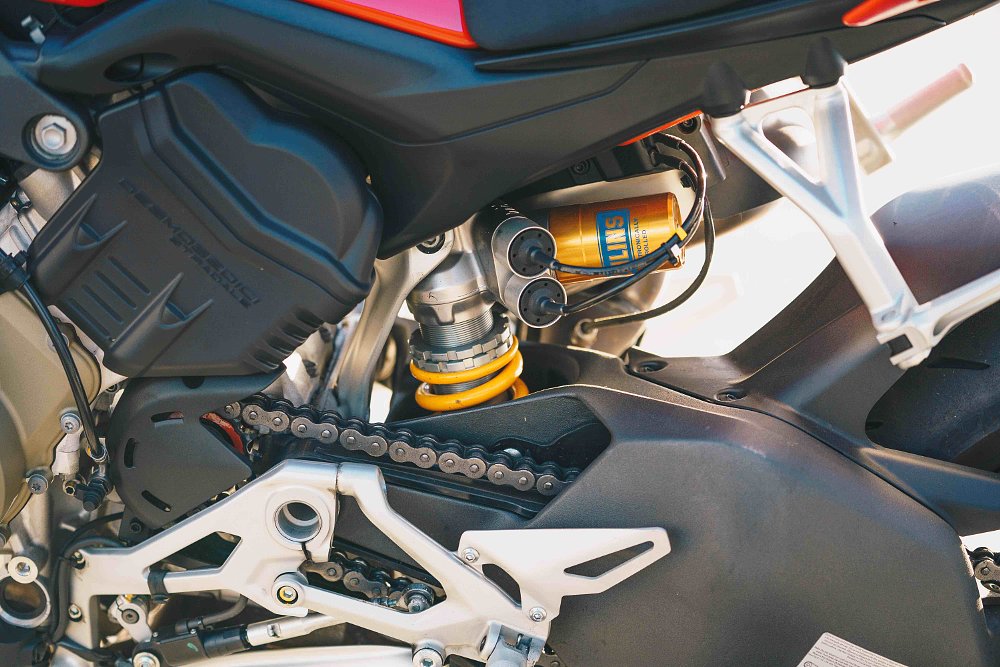
I didn’t ride it on a race track, so I’m not going to pretend to review the bike at the edge of traction. However, I did find a stretch of road or two open enough that I could give it the noise and see what 208 horsepower feels like, for a few seconds anyway. It is staggeringly fast. Evidently Ducati agrees, because torque is electronically limited in the first four gears, designed to leave enough power on the table to wheelie but not so much that it’s unmanageable. What’s really shocking is how limitless the revs feel. The bike almost behaves like a twin at low rpm, but by the time it clears 8,000 rpm there’s a raw, raspy tone firing out the exhaust and the surge of power is building quickly. Make sure you know where you’re pointed if you want to flirt with a wide-open run to the rev-limiter in any gear other than first, because it will bend time in a way few other bikes can match.
The dynamics of fast
This brings me to some of the science of why the new Streetfighter can be good at so many things. Someone asked me the other day if it really feels any faster than a 130- or 150-horsepower bike, like a Yamaha MT-10. Yes, the Streetfighter does feel faster, and at the same time doesn’t wheelie as easily. Some quick spec checking shows that the Streetfighter’s wheelbase is 3.5 inches longer than an MT-10, and the gas tank runs back under the rider’s seat to keep weight low. It’s all part of a slightly different mantra. The MT-10 is supposed to be a fast, fun, comfortable toy, and it’s exactly that. The Streetfighter, docile as it can feel, is supposed to be a fast, fun, comfortable weapon.
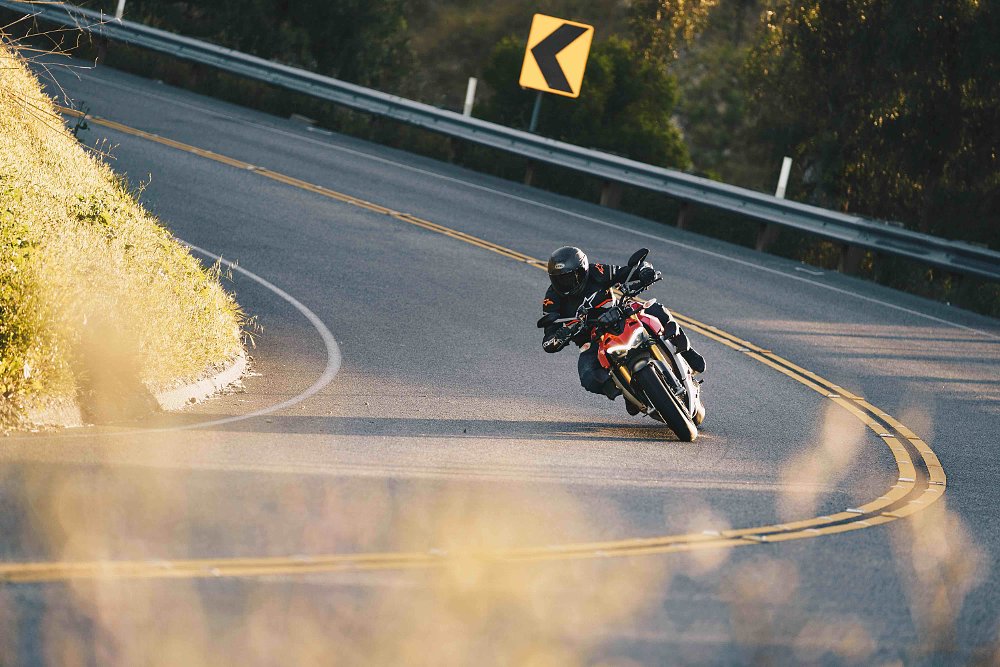
On the topic of it being docile, that is in part a miracle of modern electronics. The Streetfighter’s throttle response is good, period, but the ability to change the delivery of power from race-bike quick to soft and mellow is a useful feature, and more pronounced than with some bikes. The same can be done with the suspension. Each ride mode is individually tuneable, so I adjusted the suspension to the softest possible dynamic setting in Street mode, and combined with the low-power mode from the engine the bike becomes noticeably gentle and soft. So much so that at one point my passenger even commented, and she never even uses the word “suspension” unless she’s talking about a bridge.
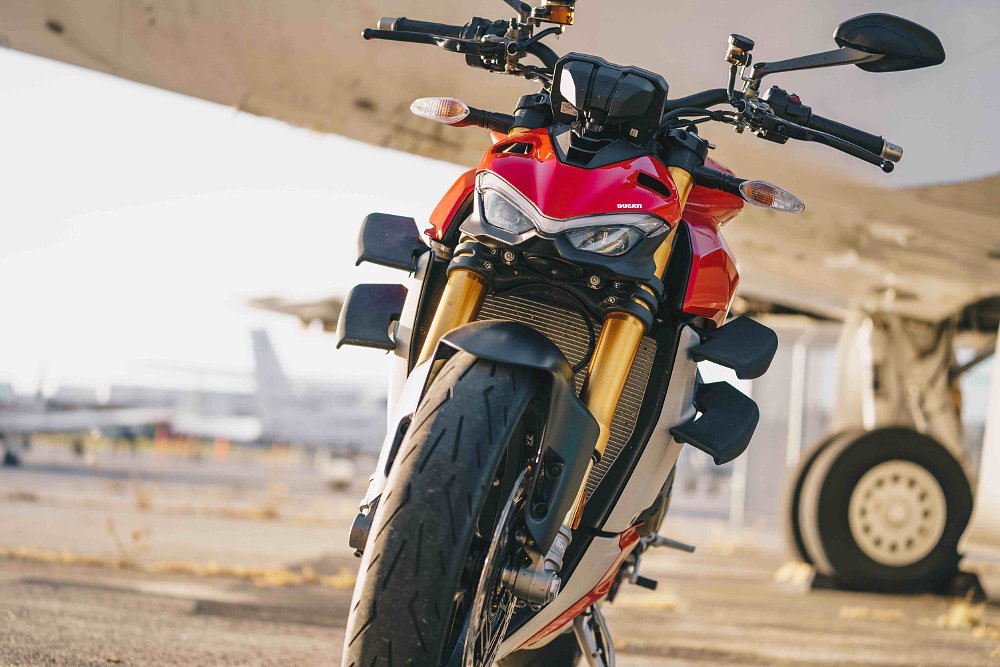
And then there’s the nifty trick it does whenever the coolant temperature is above 167 degrees, deactivating the rear two cylinders at idle in an attempt to keep the engine and the rider a little cooler. In other words, when you look closely you see the same meaningful design themes that have always made Ducati a performance brand. But in the modern era, Ducati is carefully branching away from the standing it held for so many years as a maker of only the most brutal sporting machines. The company’s experience in World Championship racing has been blending gently with lessons learned from making the Monster more docile and the Multistrada more comfortable.
The bottom line
The Streetfighter is better than I was expecting it to be at so many different things. There aren’t a lot of flaws, and they will matter more to some people than others. The final-drive gearing I mentioned earlier that can make for a bit of buzz in the pegs on the highway also contributes to pretty woeful fuel economy. My average for the few tanks I burned through was about 33 mpg, and at one point the fuel light came on with 85 miles on the trip meter. That means you can technically make it 130 miles or so, but realistically you’ll be filling up at around 110 miles. (That’s one place, incidentally, the old Streetfighter has the new one beat; a 150-mile range.)
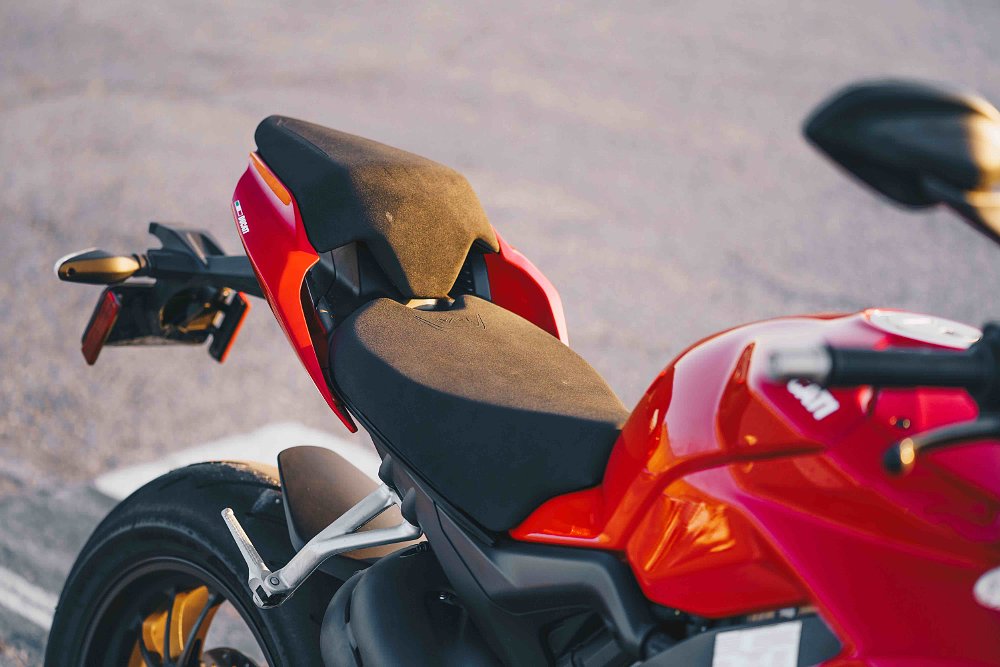
On the chassis front, it should be noted that in the grand scheme of things the suspension is fairly stiff. The electronic adjustment (manual or dynamic) is just for damping, so for less preload or softer springs you’ll need to do it manually or replace the parts. I tip the scales at about 200 pounds with gear and I found the bike pretty reasonable considering the category. If you’re lighter or more sensitive, you might not agree. To address the burning question, you might say, that so many people have about engine heat: Yes, it’s present. The only time I found it annoying was when the air temp was above 80 or 85 degrees. Those are the things that people who buy a Streetfighter V4 will most likely moan about, or at least lament.
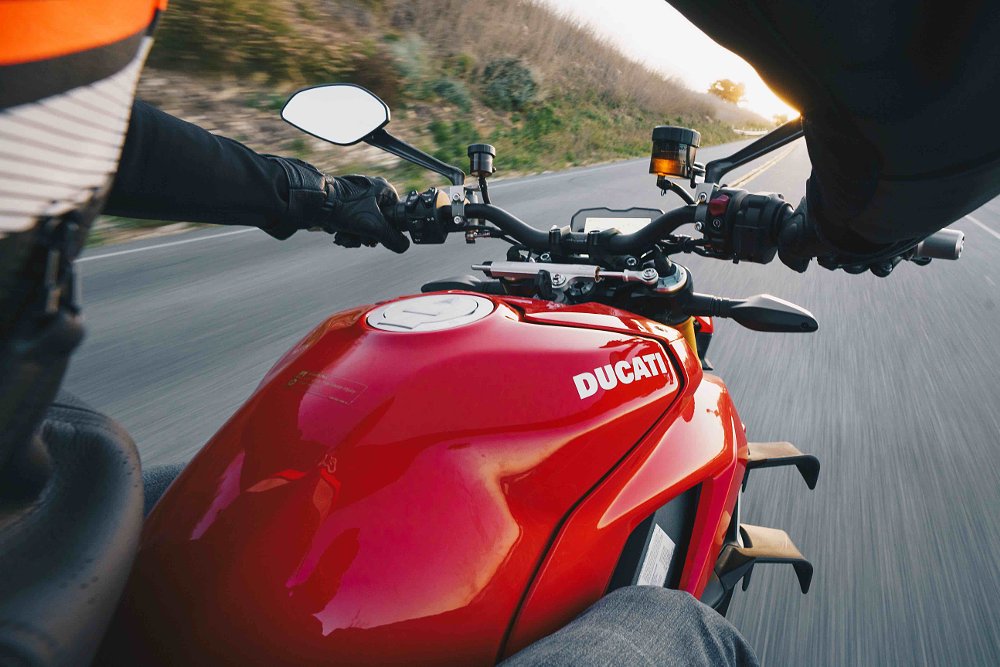
One thing non-buyers will probably complain about is the price, because at $23,995 the Streetfighter V4 S is also at the top of the cost ladder when it comes to mainstream naked bikes. Obviously, I can’t say how badly you need this bike, how much more like Andrea Dovizioso it’ll make you feel at a track day, or how ticked off you are that there’s no fuel gauge. What I can say is that I’m impressed. It reminds of the leap Ducati made from the 1299 Panigale to the Panigale V4. Both bikes are blindingly fast and enter turns with terrific precision, but the Panigale V4 is so much easier to ride. I believe MotoGP has taught Ducati that pure capability doesn’t necessarily win races anymore. It’s the machine being easy to use that makes it easy to go fast.
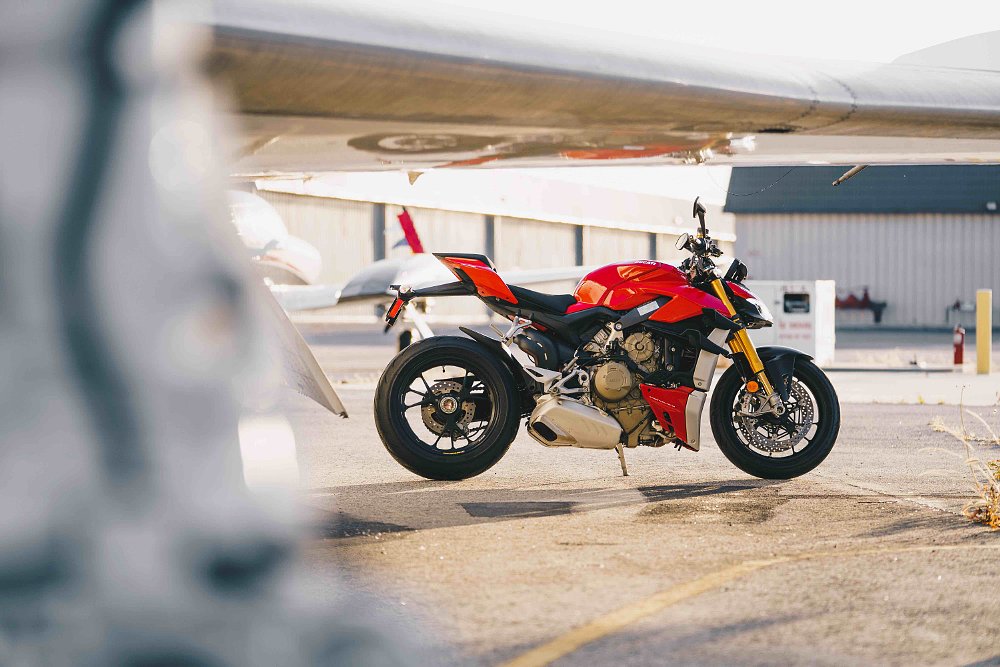
The Streetfighter V4 has adapted that mentality to the meaning of its name, with reasonable ergonomics, grippy footpegs, and a dash that is lovely and easy to use. It is a true Jekyll-and-Hyde experience, which is the ultimate compliment in this class of bike, and I’ll add my name to the list of people who thought they had this new Streetfighter figured out before they rode it.
| 2020 Ducati Streetfighter V4S | |
|---|---|
| Price (MSRP) | $23,995 ($19,995 non-S) |
| Engine | 1,103 cc, liquid-cooled, 16-valve, V-four |
|
Transmission, final drive |
Six-speed, chain |
| Claimed horsepower | 208 @ 12,750 rpm |
| Claimed torque | 90.4 foot-pounds @ 11,500 rpm |
| Frame | Aluminum-alloy front frame |
| Front suspension | Öhlins NIX30 43 mm fork, adjustable for spring preload, electronically adjustable dynamic compression and rebound damping; 4.7 inches of travel |
| Rear suspension | Öhlins TTX36 shock, adjustable for spring preload, electronically adjustable dynamic compression and rebound damping; 5.1 inches of travel |
| Front brake | Brembo Stylema (M4.30) four-piston calipers, 330 mm discs with ABS |
| Rear brake | Brembo two-piston caliper, 245 mm disc with ABS |
| Rake, trail | 24.5 degrees, 4.0 inches |
| Wheelbase | 58.6 inches |
| Seat height | 33.3 inches |
| Fuel capacity | 4.2 gallons |
| Tires | Pirelli Diablo Corsa II; 120/70R17 front, 200/60R17 rear |
| Claimed weight | 439 pounds |
| Available | Now |
| Warranty | 24 months |
| More info | ducati.com |


















